2018 Toyota C-HR Vs 2018 Kia Soul

These days quirky is cool, and that trait extends to genre-busting cars like the Toyota C-HR and Kia Soul. These front-wheel-drive only cars aren’t quite crossovers but are more practical than other cars with their same footprint.
They’re also stylish, eye-catching and affordable even when loaded up. They both represent cars with personality and a uniqueness that’s hard to find these days.
It’s also a way to target a younger demographic. In fact, the Toyota C-HR was originally going to be a Scion, so its wild styling makes more sense in the context of that now-discontinued, but a millennial-focused brand.
See Also: The 5 Reasons Scion is Dead
Toyota Taps into its Inner Cool Kid
It has aggressive and sporty looking flared fenders while the roofline and dimensions portray a coupe-like look. In fact, the name hints at it: C-HR stands for Coupe High Rider, which is as good of a description as any for this car. But don’t be fooled, there are rear doors that are accessed by well-hidden handles.
See Also: 2018 Toyota C-HR Review
There is no doubt that this car exudes personality, something that can’t be said about many other Toyotas out there. You can also get it in a number of color finishes and even two-tone designs, that really stand out.
The expressive exterior bodes well for the interior, which is unique too. It’s clean looking with a cluster of buttons in the center that is easily accessible. Soft-touch materials help mask the affordability of this car, and it features nice and slim A-pillars that provide great forward visibility. The 7-inch touchscreen doesn’t have Apple Car Play or Android Auto support, and there’s no way to get navigation.
The seats are supportive, and there’s a leather-wrapped steering wheel that feels really good too. Further rounding out the features in the C-HR, you get dual-zone climate control, push-button ignition, heated seats and a small, almost useless rearview camera that’s integrated into the rear-view mirror.
For as small as the C-HR is, the rear seats can be usable, although I think kids and pets would fare better back there than adults or teens. Believe it or not, the Toyota has one more inch of rear headroom than the Kia Soul, but it’s down significantly in the legroom department.
There’s also a limited amount of cargo space, with just 19 cubic feet (538 liters) that expand to 36.4 cubic feet (1031 liters) when you fold the rear seats. Evening things out, the hatch opening is pretty big.
A Fantastic Drive Delivered by Toyota
While the two cars aren’t exactly comparable, they do fill in a few white spaces that make them very similar. They’re practical, funky looking and don’t drive like lumpy crossovers. The C-HR really drives home that point.
Simply put, this is one of the most fun and engaging Toyotas I’ve driven in quite some time. It uses the new TNGA C architecture, which the automaker boasts was tested and developed on the famous Nurburgring. On real roads, the small crossover feels engaging and sporty, with the perfect amount of stiffness in the suspension. The steering is also a highlight. It’s well weighted with good feedback.
Without a doubt, the C-HR lives up to its looks and is one of the best riding subcompact crossovers out there, offering more fun than the Honda HR-V and less sporty than the Mazda CX-3. One element worth pointing out is the pre-load differential, which manages torque between the left and right wheels during low-speed driving. This is designed to improve the car’s composure and driveability.
See Also: 2018 Toyota C-HR vs Honda HR-V
Needs a More Entertaining Powertrain
Sadly, my enthusiasm dips a bit when it comes to the powerplant. A 2.0-liter four-cylinder engine is found under the hood and it’s a bit boring. With just 144 hp and 139 lb-ft of torque on tap, it doesn’t sound or feel like anything special or exciting. The CVT is just acceptable and isn’t anything too offensive or too great. It has simulated gears that fake gear changes when you drive aggressively, but otherwise, the system attempts to enhance fuel economy. Rated to earn 29 MPG (8.2 liters per 100 kms) combined this too is nothing fantastic, especially when you remember that this is a front-wheel-drive only vehicle. It is more efficient than the Soul. If you don’t mind the fuel economy, the sport mode will keep the RPMs a bit higher and allow the C-HR to be more responsive.
While the little C-HR looks cool and is fun to drive, it also packs a ton of safety and driver assistance features. There is forward collision warning with active braking, a full speed cruise control system, blind spot monitoring, lane keep assistance and automatic high beams. It’s nice that all these are available, but they could be more refined as sometimes the lane keep or adaptive cruise control can act out in weird ways or send out alarming beeps for no reason. With all this tech, the choice of putting the rear-view camera in a corner of the mirror rather than the large 7-inch infotainment display make even less sense.
All in, you’re looking to spend $25,395 ($26,350 CAD) for this XLE Premium model, and I think that’s a good deal for this cool looking, well equipped and stylish car.
Compare Specs
| Vehicle | 2018 Toyota C-HR | Advantage | 2018 Kia Soul |
|---|---|---|---|
| Engine | 2.0-liter four-cylinder | - | 1.6-liter turbo four cylinder |
| Output | 144 hp, 139 lb-ft of torque | Soul | 201 hp, 195 lb-ft of torque |
| Transmission | CVT | - | seven speed dual clutch |
| Combined Fuel Economy (MPG) | 29 MPG | C-HR | 28 MPG |
| Fuel Economy (l/100kms) | 8.2 | C-HR | 8.7 |
| Cargo space (cubic feet) | 19 - 36.4 | Soul | 24.3 - 61.3 |
| Cargo space (liters) | 538 - 1031 | Soul | 532 - 1,402 |
| As Tested Price (USD) | $25,395 | C-HR | $27,795 |
| As Tested Price (CAD) | $26,350 | C-HR | $30,095 |
The Other Unique Offering
But if the fake-coupe crossover styling isn’t up your alley, the Kia Soul might be your jam. Simply put, it’s a box on wheels, but somehow Kia’s designers made that look cool.
This car has outlived other boxy cars like the Nissan Cube, Honda Element, and Scion xB. Additionally, a new generation model is expected to debut by the end of this year. It’s sold 1 million models so far in the US, so don’t tell me it’s not popular or loved.
A major part of all this has to do with those crazy advertising campaigns that feature the dancing hamsters. The Soul stands out and has a presence like few cars do.
Jumping into the vehicle, you’ll notice that the car sits up high, but doesn’t require a step or anything, which is a small thing that goes a long way. However, as unique as the exterior of the car is, the interior is less expressive. Besides the speaker grilles and orange stitching, you can be excused for thinking that this car is like any other Kia.
Lights!
But then again, those speaker grilles are pretty interesting, as this model has mood lighting that illuminates the speakers and changes color or brightness while you’re driving. You can also set it to change with the music, which is a small gimmick but one that doesn’t get in the way or offend anyone. This car does pack a Harmon Kardon branded system, which sounds pretty good.
Anyone expecting more luxuries or features in the Soul may be disappointed. There’s no dual zone climate control, but there are heated seats in the front and rear as well as a heated steering wheel. Kia also offers Android Auto and Apple Car Play, and there’s a quick charge USB port in the armrest. The touchscreen is a bit easier to use, and I love the ability to rewind live satellite radio stations on this car.
Without a doubt, the Soul makes its impression with its clever use of space. There’s much more rear leg room in the car, and it feels like a more appropriate choice for families when compared to the C-HR. But the cargo space is incredible due to the boxy and practical design of the trunk. There are 24.2 cubic feet (532 liters) that expand to 61.3 cubic feet (1,402 liters) when the rear seats are down.
Great Engine, Bad Transmission
A car with an unapologetically boxy exterior needs some serious confidence, and fortunately, the Soul drives with a pretty buttoned-down feel. Under the hood of the model, we’re testing is a 1.6-liter turbocharged four-cylinder engine making 201 horsepower and 195 lb-ft of torque. This motor has been used in a number of Kia and Hyundai products in the past, all to good critical response. It’s powerful with plenty of passing capability.
However, it’s paired to a seven-speed dual clutch that Kia really needs to consider retiring. It can be a bit rough and hesitant to change gears. It’s far from the smooth experience in newer Kias, and I wish the Soul had a better alternative, like say, a manual.
See Also: 2019 Kia Soul Spied Testing Possible AWD
However, the Soul offers different drive modes, and using the sport mode makes the transmission a bit more active and that negates some of the issues I had with it. Combined the boxy car gets 28 MPG.
Steering and handling of the Soul are good, but not as sporty or engaging as the C-HR. The good news though is that the Kia has great visibility all around the car thanks to the big windows and utilitarian design. Speaking of windows, the Soul can also come with a massive sunroof.
That’s it?
Finally, the Soul’s driver assistance features should be explained, but there isn’t much to talk about. Sure the rear-view camera is clear and useful, and there’s a blind spot monitoring system, but this turbocharged model doesn’t come with much else. Other trim levels of the car can get features like smart cruise control, lane departure warning, and automatic emergency braking but this car, even with its upgraded engine doesn’t come with any of those features.
See Also: Kia Soul Receives Best Possible IIHS Rating
After driving the C-HR which has many of these features as standard equipment, it’s become an expectation in something that costs $27,795.
The Verdict: 2018 Toyota C-HR vs 2018 Kia Soul
As stated before, these two cars aren’t direct competitors, but they have a lot in common than you think. Both are billed as practical and cool looking cars for those on a budget. The Soul has more power and cargo space, while the Toyota is definitely more fun to drive with more standard safety features.
There’s no real winner here, but I’d probably pick the Toyota if it was my money, because I love the design and handling. But with so many cars arriving with derivative styling and zero personality, it’s easy to say that either choice is a good one.
Discuss this story on our Toyota C-HR Forum or Kia Soul Forum

Sami has an unquenchable thirst for car knowledge and has been at AutoGuide for the past six years. He has a degree in journalism and media studies from the University of Guelph-Humber in Toronto and has won multiple journalism awards from the Automotive Journalist Association of Canada. Sami is also on the jury for the World Car Awards.
More by Sami Haj-Assaad






























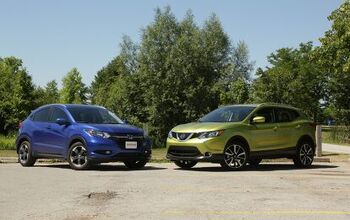
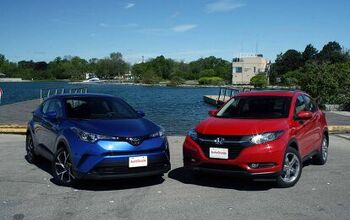
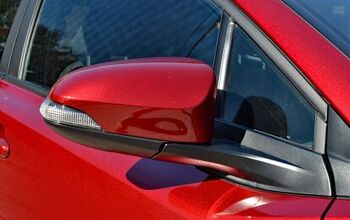

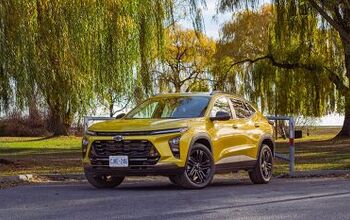
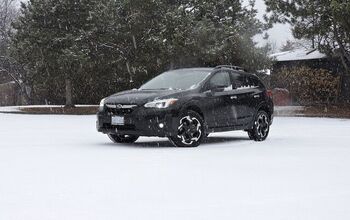


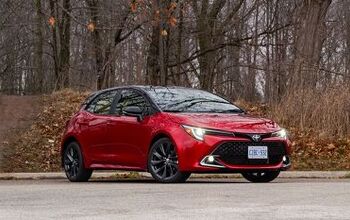

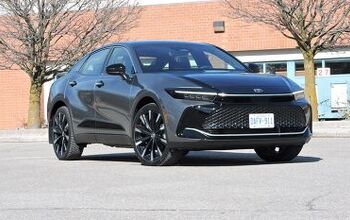


Comments
Join the conversation
kia soul=korean bbq on wheels...every now and then it's in the news burnt to the ground :)
Kia wins.. hands down.. maybe dockey.. but people like being different..